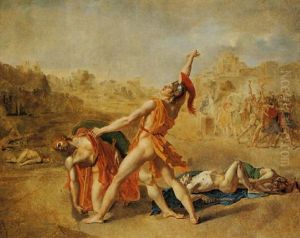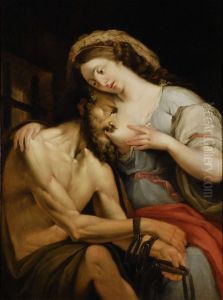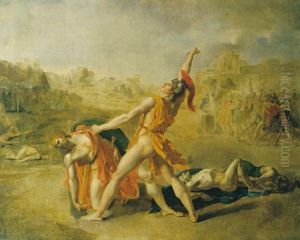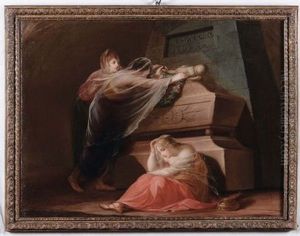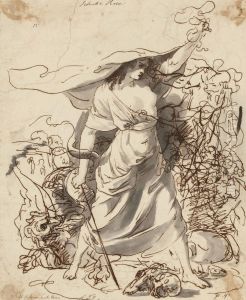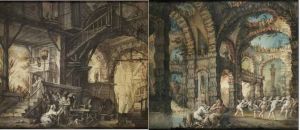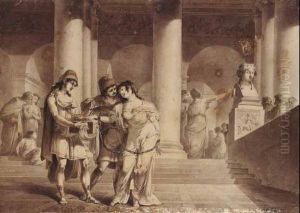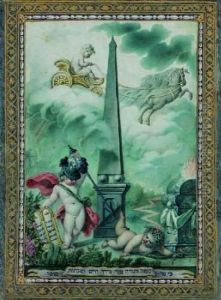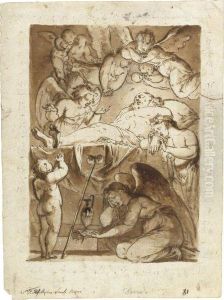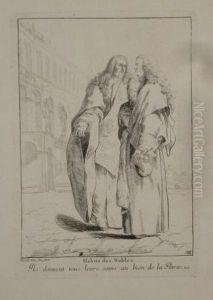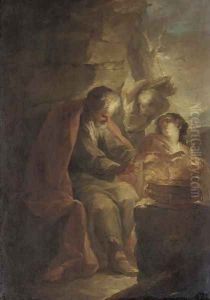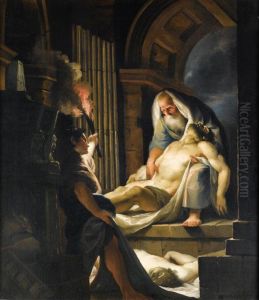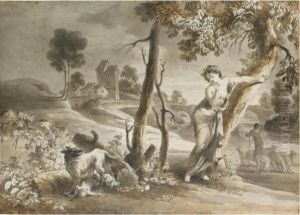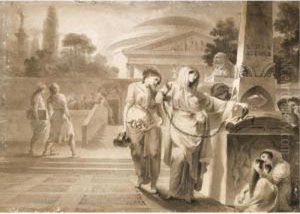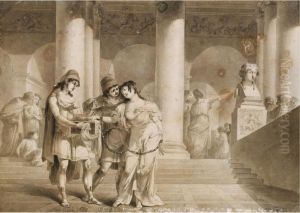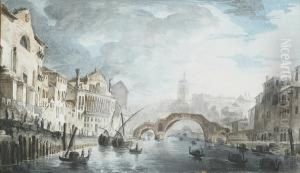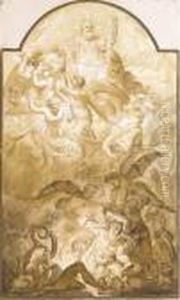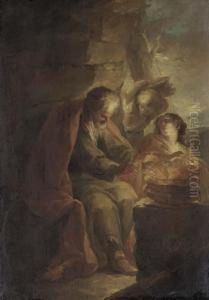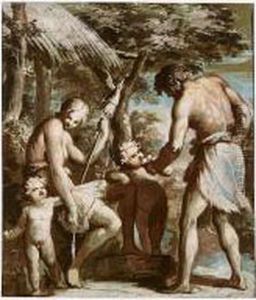Giovanni David Paintings
Giovanni David was an Italian painter and engraver, born in Genoa in 1743. Coming from a family deeply involved in the arts, David was able to cultivate his passion for painting from a young age. He initially trained under his father, Giuseppe David, but his talent quickly surpassed the local prospects. Seeking broader horizons, Giovanni moved to Rome, where he became a pupil of Domenico Corvi, a prominent painter of the time. This period was crucial for David, as he was exposed to the dynamic artistic environment of Rome, absorbing the influences of the masters of the High Renaissance and the burgeoning Neoclassical style.
During his time in Rome, David honed his skills and began to develop his unique style, which blended the grandeur of the Renaissance with the emerging clarity and simplicity of Neoclassicism. His works, particularly his historical and mythological paintings, were celebrated for their dynamic compositions and exquisite detail. David's reputation grew, and he became known for his ability to capture the essence of his subjects with both precision and emotional depth.
In the 1770s, Giovanni David returned to Genoa, where he was met with considerable success. He received numerous commissions from the local nobility and religious institutions, contributing significantly to the city's artistic heritage. Among his most renowned works from this period are his frescoes in the Palazzo Spinola and his altarpieces in various Genoese churches, which are still admired for their vibrancy and expressive power.
Despite his success, Giovanni David's life was marked by personal tragedies and financial difficulties. He struggled with the changing tastes of the art market and the political upheavals of his time, which impacted the demand for his work. Nevertheless, David continued to paint until his death in Genoa in 1790. His legacy, though somewhat overshadowed by the more famous artists of his era, remains significant in the history of Italian art. Giovanni David's contributions to the transition between Baroque and Neoclassical art are particularly noteworthy, as he captured the spirit of his changing times through his innovative and emotionally resonant works.
